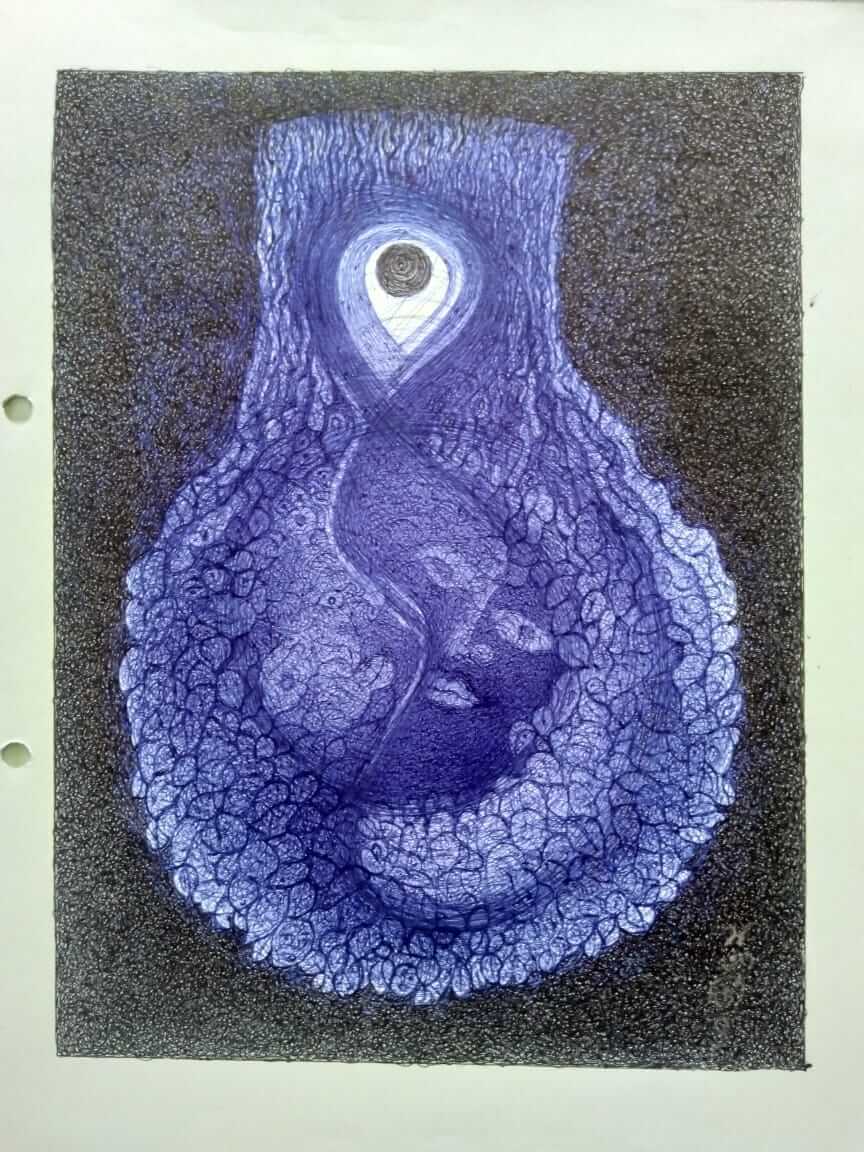Nilanjana retells the story of Shri Rama, the seventh avatar of Narayan, in the weekly column, exclusively in Different Truths.
Shri Rama is the seventh avatar of Lord Vishnu. Jayah and Vijayah, the door-keepers of Lord Vishnu were cursed by Brahma’s sons. We have discussed this story earlier. As a result of this curse, they had to take birth in the world of mortals. Lord Vishnu had promised them that he would also be born around the same time. Their hatred towards the lord would eventually lead to their death in his hands. This way they will attain moksha (liberation). The first birth of Jayah and Vijayah was as Hiranyaksha and Hiranyakashipu. Their second birth was Ravana and Kumbakarna. Simultaneously, Lord Vishnu was born as Shri Rama.
 Shri Rama’s story is well known across India. Here is an attempt to highlight some parts of the story from Lord Vishnu’s role in this avatar.
Shri Rama’s story is well known across India. Here is an attempt to highlight some parts of the story from Lord Vishnu’s role in this avatar.
Shri Rama was born to the King of Ayodhya, Dasharatha. The king was blessed with four sons – Rama, Lakshmana, Bharata and Shatrughna. Some sources say that the lord was born in all the four forms to rid the world of accumulated sins.
When Rama was just sixteen years old, Sage Vishwamitra came to the court of King Dasharatha and requested him to send his son to destroy the demons Maricha and Sabahu who were creating nuisance during his holy yajnas (ceremonies). At the behest of Sage Vasistha, King Dasharatha allowed his sons, Rama and Lakshmana to go to the forest to help Sage Vishwamitra destroy the demons and complete the yajna.
On their way back, Rama visited Janaka, the King of Mithila. Here Rama broke the great bow of Shiva and won the hand of Sita in marriage.
won the hand of Sita in marriage.
Now many years back, King Dasharatha had made a promise of two boons to his wife Kaikeyi. The Queen asked her husband to hand over the throne to her son Bharata instead of the eldest-born Rama. She also requested that Rama should be away from home for fourteen years. The heartbroken king had to agree to her. Rama, quite calmly, agreed to honour the promise made by his father and went away to the forest with his wife Sita and brother Lakshmana.
In the forest, Ravana’s sister Shurpanakha was enamoured by Rama. The commotion that ensued injured Shurpanakha, who decided to seek revenge. She called her associates, demons Khara and Dushana. But Rama and Lakshmana defeated all of them. Eventually, the angry and hurt Shurpanakha requested her brother Ravana to seek revenge. Ravana instigated the demon Maricha to take the form of a golden deer and roam in the forest. Sita saw the deer and wanted it for herself. She had never asked her husband for  anything. So when she made this request, Rama pursued the deer. He, however, asked Lakshmana to keep watch over Sita. Rama’s arrow injured Maricha (in the form of the golden deer). He let out a wail (impersonating the voice of Rama) that made Sita very anxious. She sent Lakshmana out to look for his brother. Meanwhile, Ravana, in the form of an ascetic, visited the ashrama (retreat) and abducted Sita, tricking her.
anything. So when she made this request, Rama pursued the deer. He, however, asked Lakshmana to keep watch over Sita. Rama’s arrow injured Maricha (in the form of the golden deer). He let out a wail (impersonating the voice of Rama) that made Sita very anxious. She sent Lakshmana out to look for his brother. Meanwhile, Ravana, in the form of an ascetic, visited the ashrama (retreat) and abducted Sita, tricking her.
Rama and Lakshmana roamed in the forest in search of Sita. They came across Jatayu who was injured by Ravana when he tried to stop him from taking Sita away. Subsequently, with the help of Hanuman, Rama could trace Sita’s whereabouts. They managed to build a bridge ac ross the ocean and reach Lanka.
ross the ocean and reach Lanka.
Meanwhile, Ravana’s youngest brother, Vibhishana was upset by his brother’s inappropriate behavior and abandoned him to join Rama. Together with Sugriva (the king of monkeys), Rama attacked Lanka to rescue his wife. Ravana’s people put up a valiant fight. All the brave men, including Ravana’s son Indrajit and his brother Kumbhakarna, fought for their motherland, but none could withstand the valour of Rama and Lakshmana. Finally, Ravana was killed by Rama and Sita was rescued.
 At the end of fourteen years when Rama returned to Ayodhya, he saw his brother Bharata in the form of an ascetic managing the kingdom from Nandigrama situated on the outskirts of Ayodhya. Rama was crowned king and the city celebrated the homecoming of their beloved prince.
At the end of fourteen years when Rama returned to Ayodhya, he saw his brother Bharata in the form of an ascetic managing the kingdom from Nandigrama situated on the outskirts of Ayodhya. Rama was crowned king and the city celebrated the homecoming of their beloved prince.
Unfortunately, this happiness did not last long. Some of his subjects had been speaking ill of Sita and sneered at her stay in Lanka. Rama considered the king’s role more important than the husband’s and hence he asked Lakshmana to take the heavily pregnant Sita to Sage Valmiki’s ashram. The twins, Lava, and Kusha, were born there.
Again after many years when Rama met his sons and his wife, he asked her to prove her integrity so that no further aspersions were cast on her character. Sita, treating this as a final test for her character, asked Mother  Earth to shelter her if she was completely integrated with her role as a wife. As Sita entered the earth, Rama was sunk in sorrow. However, his role as a king again took precedence over his personal sorrows and he is believed to have ruled for thirteen thousand years before he shed his mortal frame.
Earth to shelter her if she was completely integrated with her role as a wife. As Sita entered the earth, Rama was sunk in sorrow. However, his role as a king again took precedence over his personal sorrows and he is believed to have ruled for thirteen thousand years before he shed his mortal frame.
The story of Rama is one of the most popular stories of this land and there are many interpretations of the same. In all the interpretations Rama goes through various trials and tribulations. But he deals with life with amazing equanimity. This is perhaps the quality that one is supposed to bow down to!
Footnote: Srimad Bhagavatam is often called the Bhagavad Purana. Authored by Ved Vyasa, the stories are about the various avatars (incarnations) of Lord Vishnu, also known as Narayana.
©Nilanjana Dey
Photos from the internet.
#BhagavadPurana #SrimadBhagavatam #Narayana #Avatars #ShriRama #Lakhman #Ravana #LordVishnu #DifferentTruths



 By
By
 By
By
